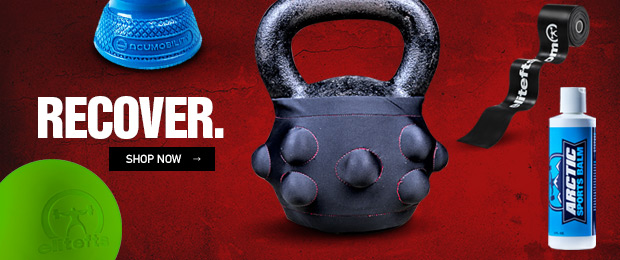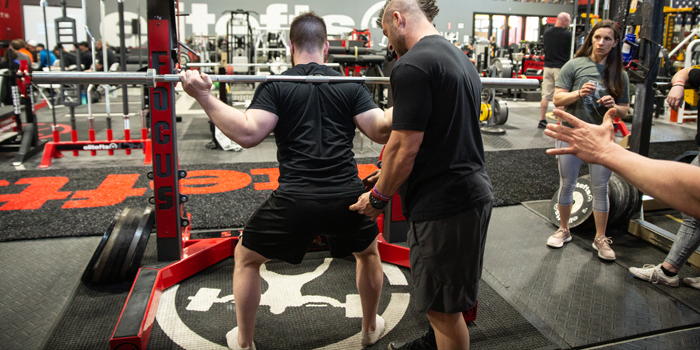
As discussed in parts 1 and 2 of the Femoro-Acetabular Impingement (FAI) and the Rehab Process series, FAI can be a relatively debilitating condition affecting many different populations, ranging from young athletes to middle-aged males and females. For further information on the diagnosis procedure of FAI and the primary underlying cause for FAI, see Part 1 and Part 2 of this series.
RECENT: FAI and the Rehab Process: The IT Band as the Root of All Problems
Following the diagnosis procedure and the loosening of the IT band (and other potential areas of concern), the next step in rehabbing FAI is the re-activation and re-alignment stage. As discussed in Part 2 of this series, the over-tightness of the IT band can lead to deactivation of the glute and the tensor fasciae latae (TFL) while over-activating muscles surrounding the SI joint.
Assuming the IT band has been loosened enough to allow appropriate activation of the glute and TFL, the initial procedure is re-activation of the glute through hip extension and abduction/external rotation.
Glute Activation Work through Hip Extension
Hip extension is the movement of bringing your hips from a bent angle to eventually creating a straight line through your body. Hip extension is performed in nearly all lower body movements, including squats, deadlifts, jumps, etc.
Glute activation through hip extension should be performed with a bent knee, with the reason being that when the knee is bent, the glute should be the primary hip extensor (as opposed to the hamstring being the primary hip extensor while the knee is straight). For this reason, bent knee hip extension exercises can be used as a glute activation exercise and as a test.
The most important part of hip extension activation work is that the focus of the contraction is always in the glute. Having an under-active glute will often lead to activation/cramping of the hamstring or low back/SI joint. The hamstring, as a synergist to the glute, will attempt to take over as the primary hip extensor throughout the movement, while the musculature of the low back/SI joint will look to over-extend as a result of an underactive hip extension.
Therefore, while all of the following exercises are glute activation exercises in and of themselves, a conscientious focus should always be placed on feeling the contraction through the glute. In addition to this, a progression of the movement should not be used until the client can sufficiently feel their glute (coupled with a lack of cramping in the hamstring/lower back) working throughout the regressed version of the movement.
The Glute Bridge and Its Progressions
The Glute Bridge is performed when the client is lying in a prone position with his/her knees bent and the soles of their feet on the floor. From here, the client will push through his/her heels to extend the hip and finish in a full 180-degree hip extension position. The exercise is most challenging when an isometric hold lasting at least three seconds is performed at the top. The client should focus on squeezing their glutes throughout the movement to avoid cramping/activation of the hamstring/lower back. Once the client can perform 10 or more repetitions of a progression with no back/hamstring cramping, they should be allowed to progress to the next movement.
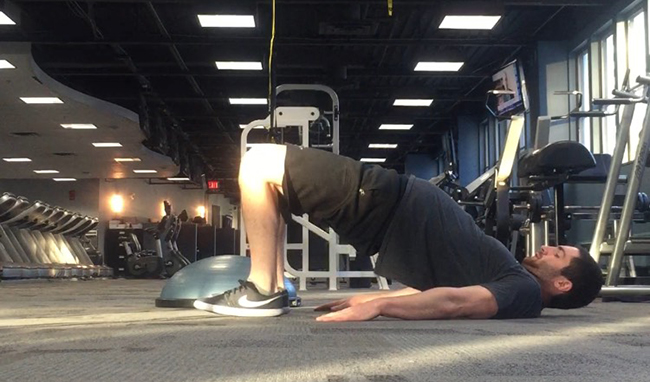
The following progressions from the Glute Bridge are as follows:
The Single Leg Glute Bridge
The Single Leg Glute Bridge is a very similar movement to the Glute Bridge but one of the client’s feet will be placed on the grounded leg’s knee. This will increase the demand of the grounded leg’s glute and make sufficient contraction of the glute more difficult.
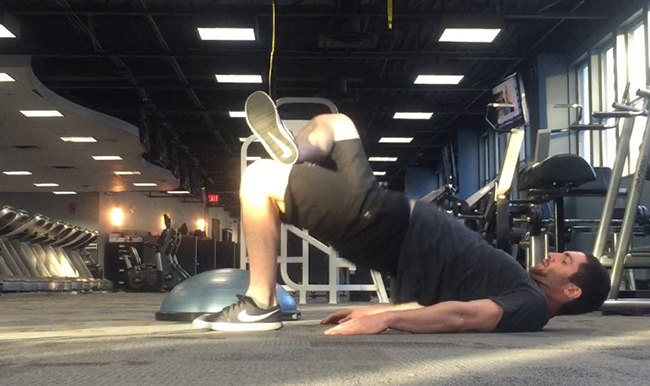
The Glute Bridge and Single Leg Glute Bridge on a Bosu Ball or Swiss Ball
Adding instability to the movement greatly increases the coordination needed between the glute and the hamstring. Placing one’s heel on a Bosu Ball or Swiss Ball puts somebody’s body into an uncomfortable, unfamiliar position. When somebody’s body is put into an unfamiliar position, their dominant muscle or way of moving will look to take over. For this reason, the Glute Bridge (two leg and single leg) while the person’s heel is on a Bosu Ball (easier progression) or Swiss Ball (harder progression) will often expose somebody’s hamstring/lower back over-activation, even if a sufficient Glute Bridge can be performed while the person’s heel is on the ground.
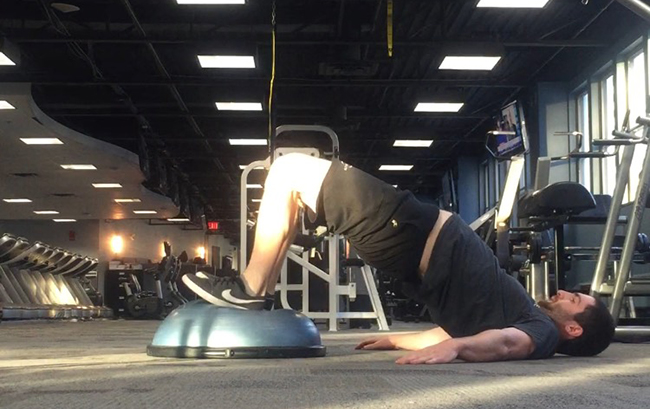
Glute Bridge on a Bosu Ball
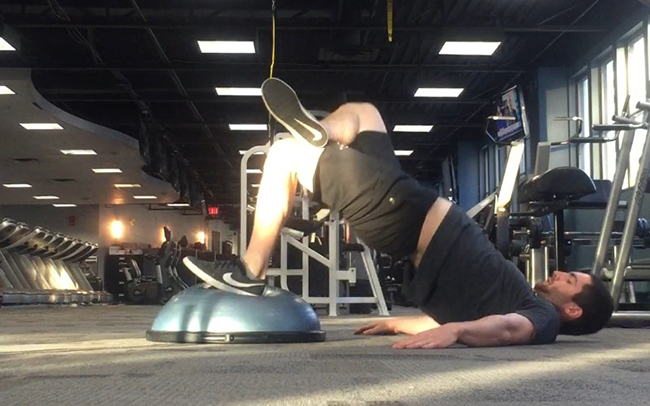
Single-Leg Glute Bridge on a Bosu Ball
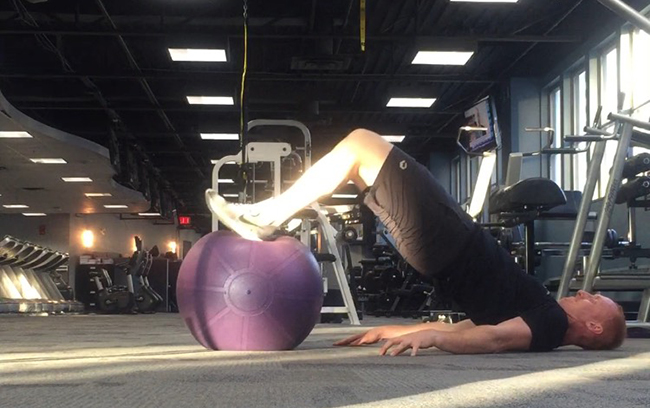
Glute Bridge on a Swiss Ball
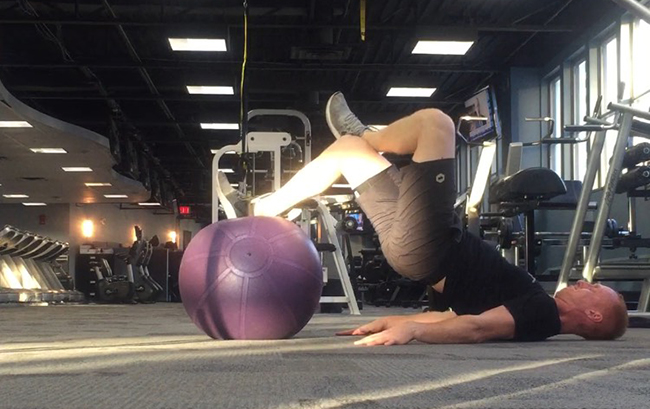
Single-Leg Glute Bridge on a Swiss Ball
Glute Activation Work Through Hip External Rotation and Abduction
External rotation of the hip is the turning of your hip so that the knee is facing away from one’s body. Abduction is the movement of using the glute to bring one’s leg away from the midline of the body. A combination of external rotation and abduction is used in squatting, jumping, and to a lesser extent, deadlifting, running, etc.
Hip external rotation and abduction can be performed through a number of different ways, most commonly through the Banded Crab Walk, Monster Walks, and Banded External Rotations.
The Banded Crab Walk is performed with a resistance band wrapped just above the client’s knees. From this position, the client will assume a quarter squat stance and slowly walk to the side, while consciously turning the knee outward toward the small toe.
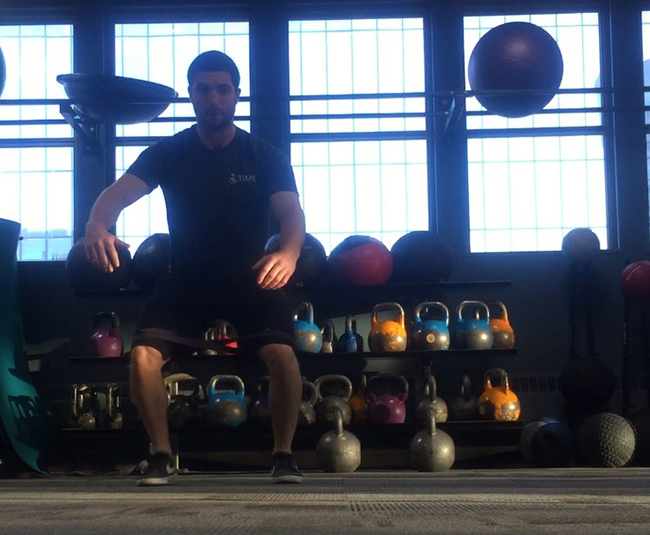
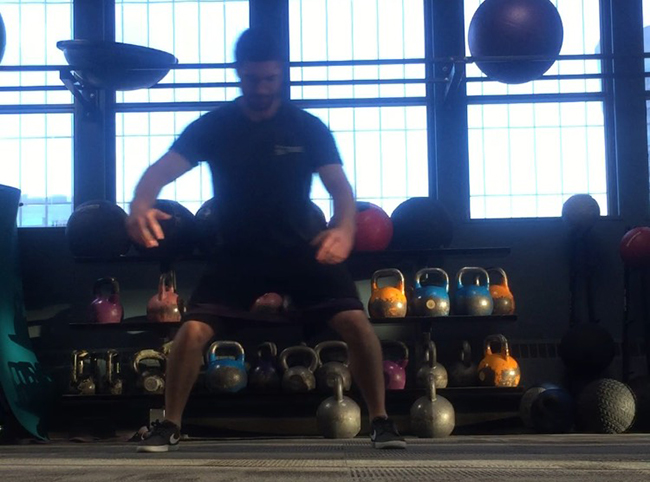
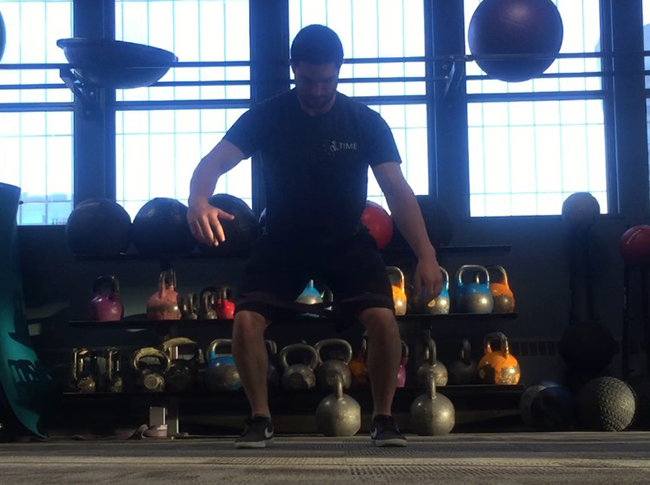
Monster Walks are done in a similar fashion to the Banded Crab Walk, but the client’s knees will be straight throughout the entire movement.
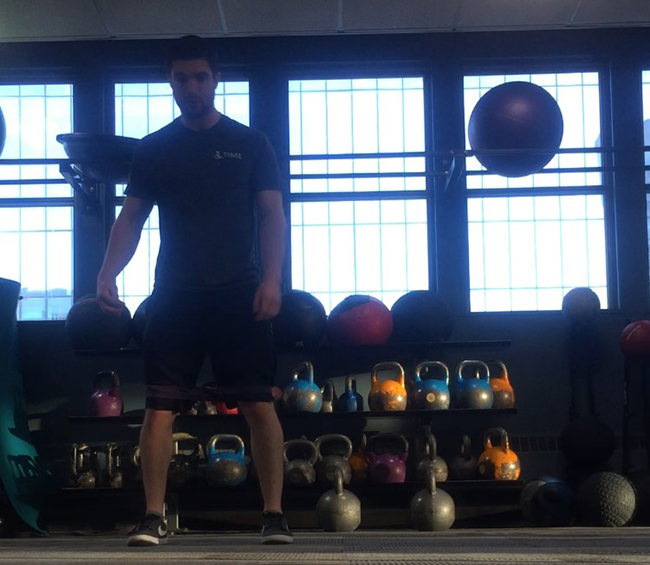
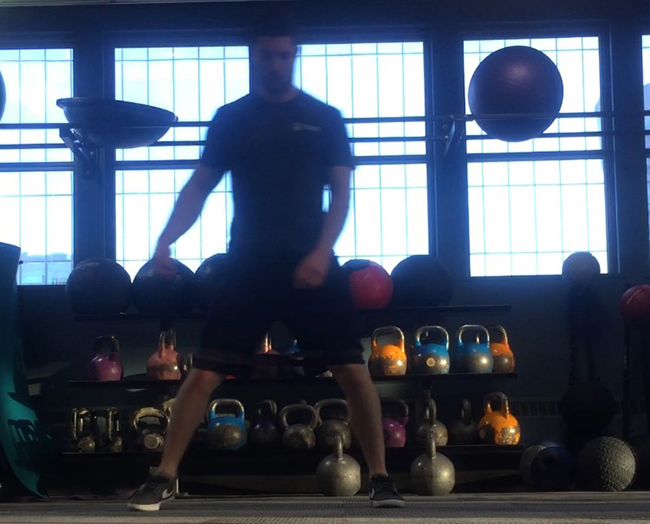
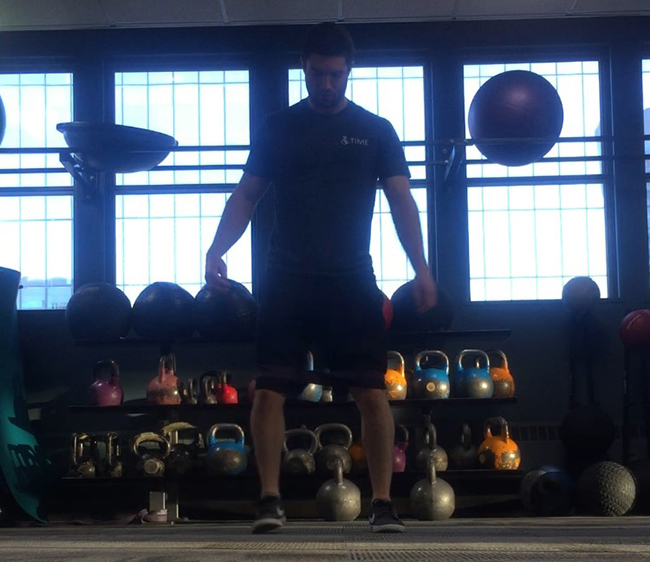
The Banded External Rotation is again performed in a squat stance with a resistance band wrapped just above the client’s knees. From this position, the client will purposely internally rotate the hip, and then externally rotate the hip, while consciously activating the glute.
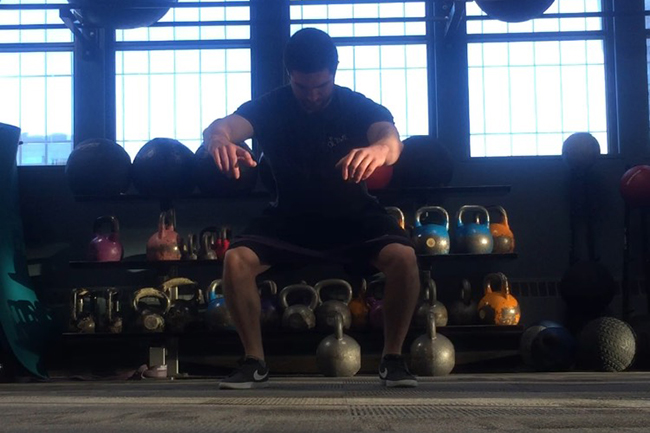
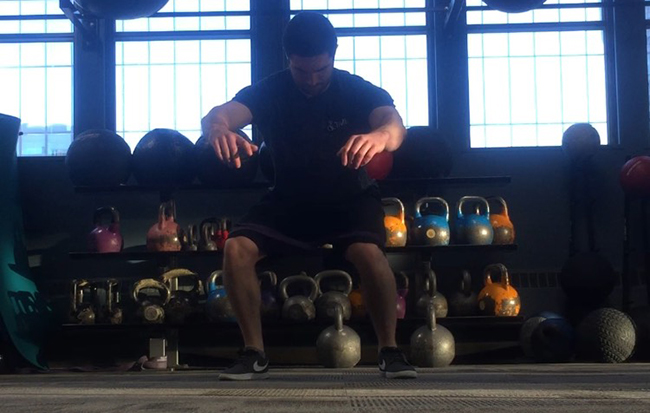
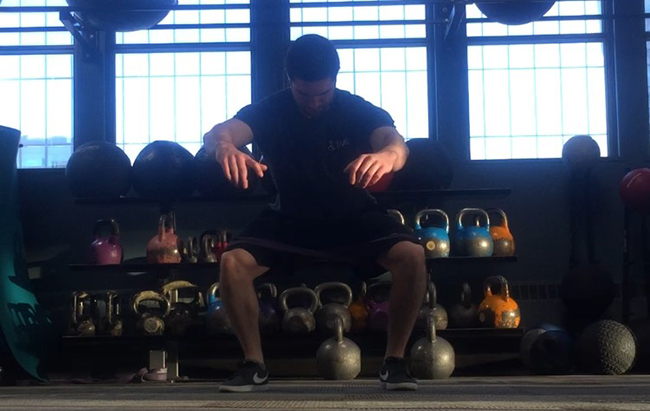
For a comprehensive body of work on glute activation and glute strength training as a whole, one should always look to Bret Contreras (he and his colleague, Chris Beardsley, were also mentioned in Part 1 of this series) and the work he has written. For an extremely relevant piece of work in regards to this series, one should also read Contreras’ “How to Fix Glute Imbalances.” (2)
Pelvic Stability and Control
Following the diagnosis, the releasing of the IT band, and the re-activation of the glute, the client can now begin to re-pattern faulty movements by regaining adequate pelvic stability and control. Throughout this phase of the rehab procedure, the client will work toward correcting bilateral and unilateral movements in an attempt to create symmetry from the affected side to the unaffected side.
It should also be noted that throughout this phase, perfect symmetry from one side to the other is the ultimate goal. However, nobody will be perfectly symmetrical from one side to the other due to previous injuries, dominant sides in daily life, sporting history, etc. This phase is where it is most important to work with a qualified physician in knowing the boundaries of acceptable movement versus unacceptable movement.
The rebuilding of pelvic stability can be performed using a large variety of different exercises and should be focused on following on from the rehab phase. Pelvic stability should always be a present focus in the training of injured or non-injured clients.
However, the three exercises in correcting pelvic control that will be discussed in this series are the squat (front, back, goblet, etc.), the Dumbbell King Deadlift (which will eventually progress to the Single Leg Romanian Deadlift) and the Pistol Box Squat.
Pelvic Control in the Squat
The squat is the undisputed king in terms of lower body exercises. Almost everybody can benefit in some way from squats, and people going through FAI rehab are no exception. Hip shift, knee valgus, and posterior pelvic tilt are all pieces of information that should be taken into account when assessing somebody’s squat, especially following FAI.
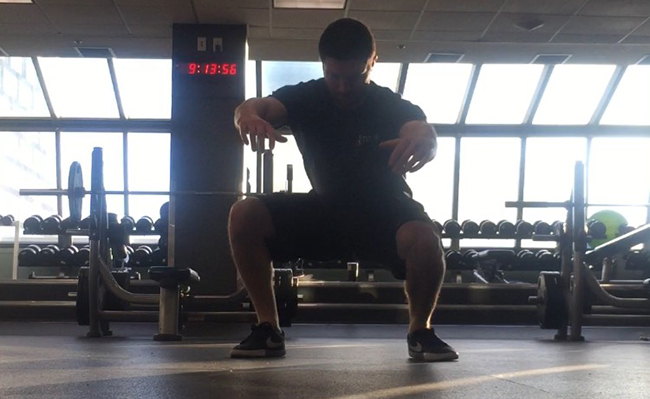
Generally, a hip shift in the squat will happen in conjunction with asymmetrical knee valgus due to the glute max’s inability to sufficiently externally rotate the hip. As discussed earlier, some knee valgus and hip shift is to be expected, depending on the client’s activity and injury history. However, a general rule is that the client’s knee should never track further inward than their hallux (big toe) during weighted or unweighted movements.
In regards to the level of hip shift, if the client has hip shift during a pure bodyweight squat, the client’s external rotation strength and pelvic stability should be a major focus. It is near impossible to completely remove a client’s hip shift during a heavy weighted movement (although this should always be the ultimate goal; one should not entirely stop squatting due to hip shift during a max or near max effort squat set) and the level of hip shift allowed is extremely subjective and would be best analyzed by a professional physician directly.
Pelvic Control in the Dumbbell King Deadlift
The Dumbbell King Deadlift is a movement similar to the Single Leg Romanian Deadlift but is a regressed version and should be the initial single leg hip hinge movement used in the rehab re-alignment phase of FAI.
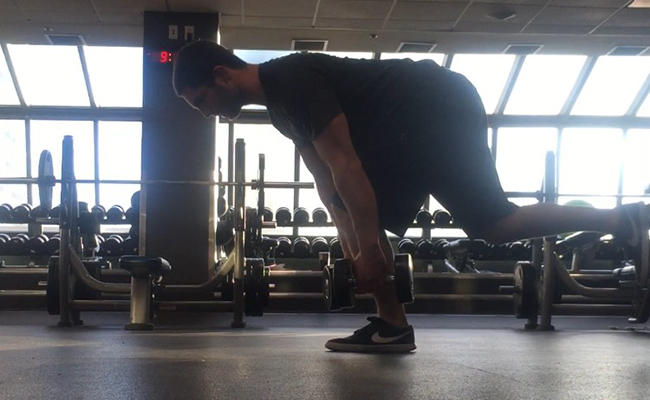
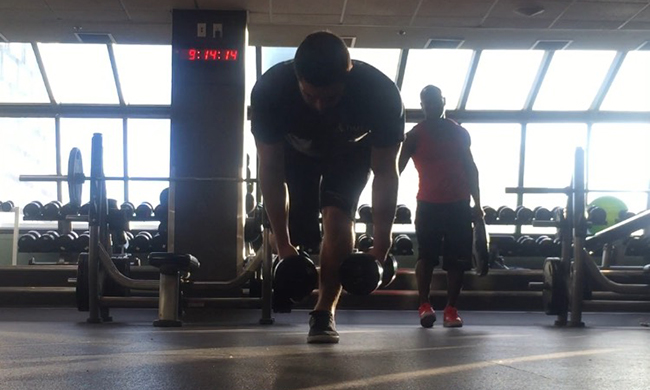
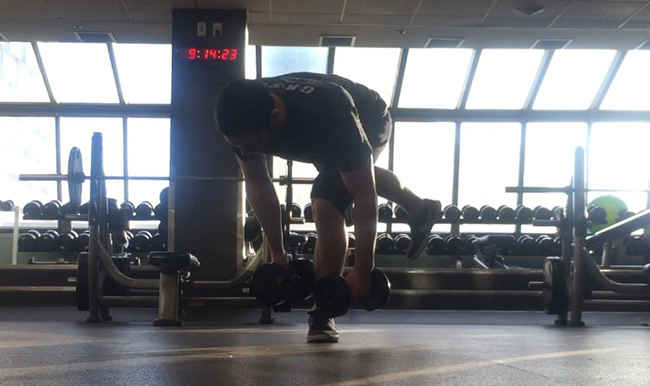
Throughout this movement, the focus should always be placed on restricting rotation of the body during the eccentric and concentric phase and in restricting hiking of the hip in the bottom position. Restricting these two unwanted movements will require large amounts of pelvic control and glute activation. (5)
Pelvic Control in the Pistol Box Squat
Pelvic control and glute stability are worked extremely hard in knee stability based exercises. Many different movements can be performed as a knee stability exercise; however, the easily regressed/progressed and easily standardized Pistol Box Squat is often used in the rehabbing of FAI.
The Pistol Box Squat is performed the same way as a pistol squat but the client will perform the eccentric only to a range of motion (ROM) where sufficient stability is still allowed.
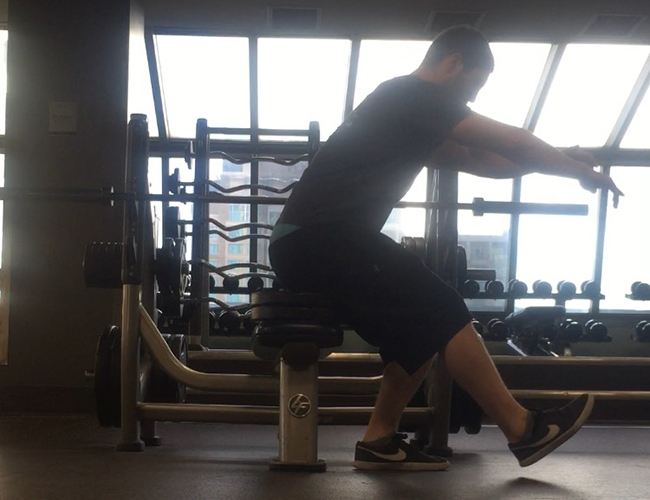
The client may only be able to initially control their knee stability sufficiently through two centimeters of ROM; however, this is the range that they should focus on until at least 12 clean repetitions (with no rotation or bouncing) can be performed. Once the client can sufficiently perform at least 12 repetitions, the box should be lowered, allowing for more ROM. This should be continued at least until the client can perform good repetitions to a box that places their thigh at or below parallel to the ground.
Conclusion
Following the diagnosis of FAI through the number of tests outlined in Part 1 and the loosening of the IT band for reasons outlined in Part 2, a client should be put through a re-alignment and re-activation phase to allow the right musculature to fire correctly and to create mobility and flexibility in overly active and tight muscle groups.
The re-activation of the glute through its three main movements should be the initial priority throughout this phase, as the re-activation of the glute will aid in learning proper stabilization and alignment of the pelvis.
Once the glute is sufficiently working and contracting, even while in a compromised position (such as the Single Leg Glute Bridge on a Swiss ball), the pelvic realignment and stabilization phase should be performed. Pelvic re-alignment throughout this phase should be performed bilaterally and unilaterally, through knee extension dominant and hip extension dominant movements.
As a final note, it should also be noted that the phases listed throughout the series of the rehab process, the loosening of the IT band, glute activation, and pelvic realignment don’t have to be performed exclusively. The client will benefit most and the quickest from an approach blending all three phases, assuming proper regressions and progressions are being used throughout.
References
- Reiman, M.P., Bolgla, L.A. and Loudon, J.K., 2012. A literature review of studies evaluating gluteus maximus and gluteus medius activation during rehabilitation exercises. Physiotherapy theory and practice, 28(4), pp.257-268.
- Bret Contreras. (2013). How to Fix Glute Imbalances. Available: https://bretcontreras.com/how-to-fix-glute-imbalances/. Last accessed 08th Apr 2018.
- Smith, C.A., Chimera, N.J., Wright, N.J. and Warren, M., 2013. Interrater and intrarater reliability of the functional movement screen. The Journal of Strength & Conditioning Research, 27(4), pp.982-987.
- Bishop, C., Brierly, S. and Turner, A.N., 2016. The single leg squat: When to prescribe this exercise. Professional Strength & Conditioning, (41), pp.17-26.
Noel FitzGibbon is a former international underage-level weightlifter who has represented Ireland at the European level and has achieved a World Ranking with the IWF. He has coached in strength and conditioning and weightlifting/powerlifting at a provincial, national and international level. He is currently working as a personal trainer and a strength and conditioning coach out of Calgary, Canada.










